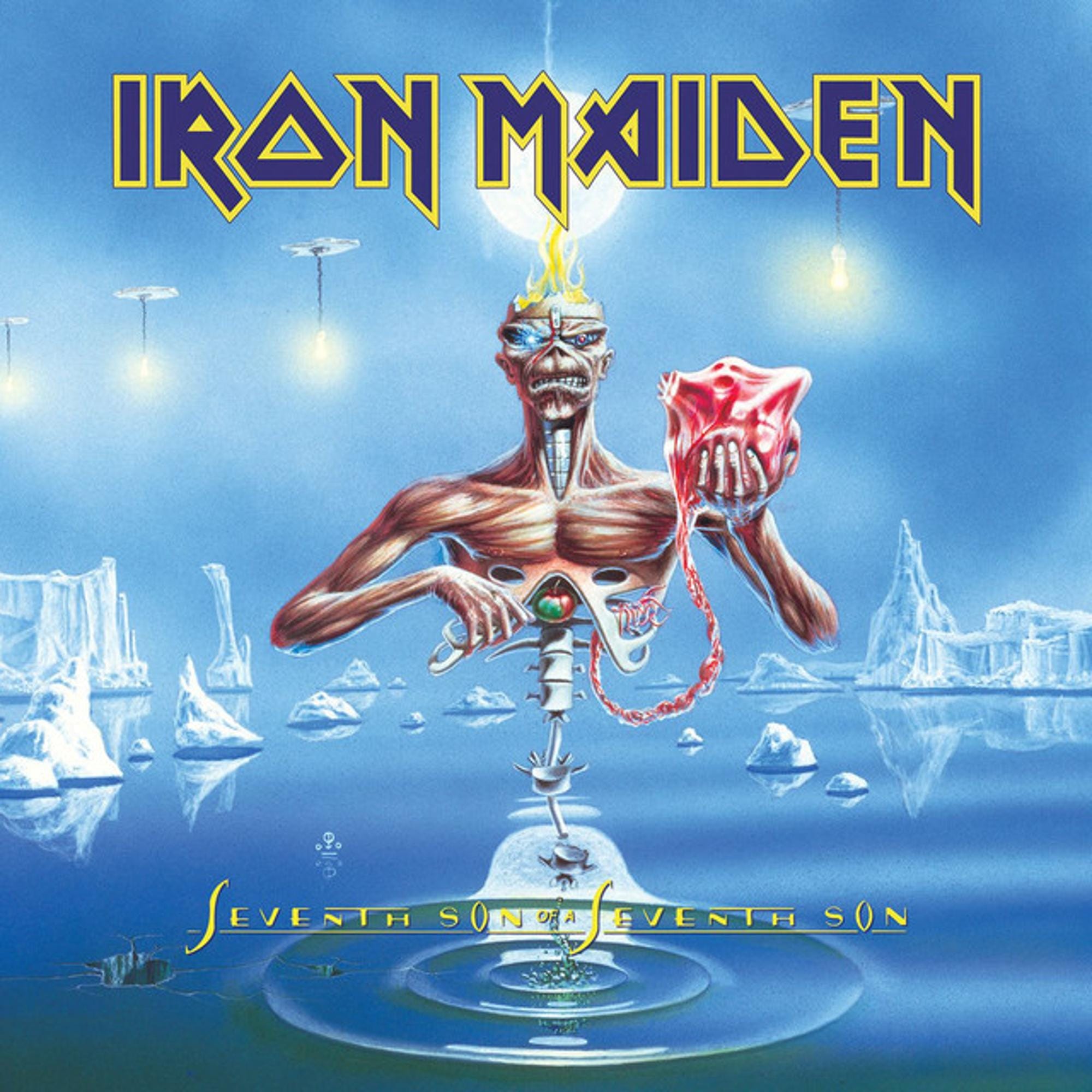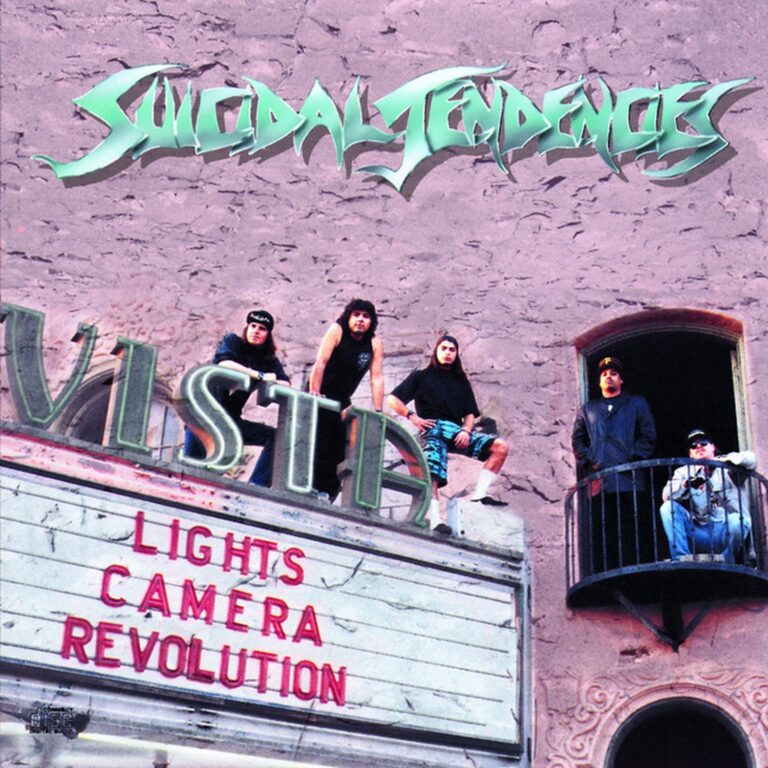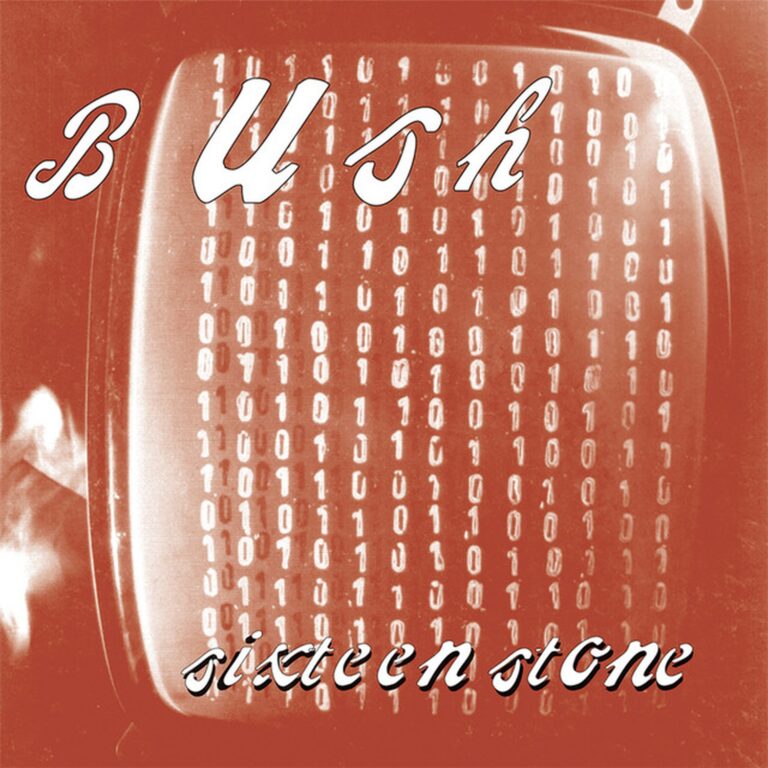
Introduction
Iron Maiden’s “Seventh Son of a Seventh Son” stands as a landmark in heavy metal history. Released on 11 April 1988, it is the band’s seventh studio album. This concept album, inspired by folklore and Orson Scott Card’s novel “Seventh Son,” explores themes of prophecy and supernatural abilities. With its blend of heavy metal and progressive rock, it marked the first time the band used keyboards in their music. This article will delve into the album’s creation, recording process, commercial success, track analysis, and its lasting legacy.
| Attribute | Details |
|---|---|
| Release date | 11 April 1988 |
| Album title | Seventh Son of a Seventh Son |
| Genre | Heavy Metal, Progressive Rock |
| Total runtime | 43:51 |
| Number of tracks | 8 |
| Record label | EMI Records (UK), Capitol Records (US) |
| Recording studio | Musicland, Munich, Germany |
| Producer(s) | Martin Birch |
The album’s impact is undeniable, debuting at number one on the UK Albums Chart and reaching number 12 in the US. It was the last album to feature the classic lineup until 2000’s “Brave New World.” Steve Harris, the band’s bassist, noted, “It was a real challenge to create a concept album, but it pushed us to explore new musical territories.” The incorporation of keyboards and the overall quality of the album have been praised, making it a standout in Iron Maiden’s discography.
The Genesis of “Seventh Son of a Seventh Son”
In the late 1980s, Iron Maiden was at the forefront of the heavy metal scene. Following the success of their previous album, “Somewhere in Time,” the band was eager to push their creative boundaries. The musical landscape was shifting, with bands experimenting with new sounds and concepts. Iron Maiden, known for their elaborate themes and intricate compositions, decided to create a concept album that would challenge their artistic capabilities.
Before “Seventh Son of a Seventh Son,” Iron Maiden had released six studio albums, each building on their signature sound. Their previous works, such as “The Number of the Beast” and “Powerslave,” had cemented their reputation as pioneers of heavy metal. The band’s lineup, featuring Bruce Dickinson on vocals, Steve Harris on bass, Dave Murray and Adrian Smith on guitars, and Nicko McBrain on drums, was at its creative peak.
The album’s main creative contributors were Steve Harris, who conceptualised the album’s theme, and Bruce Dickinson, who co-wrote five of the eight tracks. The band financed the recording costs themselves, with a substantial budget allocated to ensure the album’s production quality matched their ambitious vision. The album’s artwork, designed by Derek Riggs, reflected its mystical themes, featuring the band’s mascot, Eddie, in a surreal landscape.
| Band Member | Instrument |
|---|---|
| Bruce Dickinson | Vocals |
| Dave Murray | Guitar |
| Adrian Smith | Guitar |
| Steve Harris | Bass |
| Nicko McBrain | Drums |
The album’s title and concept stem from the folklore of the “seventh son of a seventh son,” a figure believed to possess supernatural abilities. This idea intrigued Harris, leading to a narrative exploring themes of prophecy and the struggle between good and evil. The creation of the album artwork was integral to its presentation, with Riggs’ design encapsulating the album’s mystical essence.
Recording Process
The recording of “Seventh Son of a Seventh Son” took place at Musicland Studios in Munich, Germany, between February and March 1988. This studio, known for its state-of-the-art facilities, provided the ideal environment for Iron Maiden to experiment with new sounds. The band aimed to incorporate keyboards into their music, a first for them, to enhance the album’s progressive rock elements.
Martin Birch, the producer, played a crucial role in the album’s creation. Having worked with the band on their previous albums, Birch was familiar with their sound and ambitions. His expertise in engineering and mixing was instrumental in achieving the album’s polished yet dynamic sound. The recording sessions were intense, with the band pushing themselves to capture the complexity of the album’s concept.
Assumptions about the studio’s hardware include the use of Marshall amplifiers, Gibson and Fender guitars, and a Neve console for mixing. These were typical of the era and likely contributed to the album’s distinctive sound. The band faced challenges, such as balancing the new keyboard elements with their traditional heavy metal sound, but these were overcome through Birch’s guidance and the band’s dedication.
| Hardware | Details |
|---|---|
| Microphones | Neumann U87 |
| Mixing Desk | Neve Console |
| Guitars | Gibson, Fender |
| Amplifiers | Marshall |
Martin Birch’s extensive discography includes iconic albums from bands like Deep Purple and Black Sabbath. His collaboration with Iron Maiden on “Seventh Son of a Seventh Son” was a testament to his ability to adapt and innovate within the evolving music landscape.
| Producer | Artist | Album | Year |
|---|---|---|---|
| Martin Birch | Deep Purple | Machine Head | 1972 |
| Martin Birch | Black Sabbath | Heaven and Hell | 1980 |
| Martin Birch | Whitesnake | Slide It In | 1984 |
Commercial Performance and Reception
Upon its release, “Seventh Son of a Seventh Son” achieved significant commercial success. It debuted at number one on the UK Albums Chart and reached number 12 on the US Billboard 200. The album’s innovative use of keyboards and its concept-driven narrative resonated with fans and critics alike, solidifying its place in heavy metal history.
The album’s singles, including “Can I Play with Madness” and “The Evil That Men Do,” performed well on the charts. The former peaked at number three on the UK Singles Chart, showcasing the band’s ability to create commercially viable yet artistically ambitious music. This success was a testament to Iron Maiden’s enduring appeal and their ability to evolve with the times.
Let’s take a look at how this album fits into Iron Maiden’s discography:
The album was certified Gold in the UK, US, and Germany, and Platinum in Canada and Italy. Its accolades are a reflection of its widespread acclaim and the band’s influence on the heavy metal genre.
Other notable albums released in 1988 include:
- Operation: Mindcrime by Queensrÿche
- …And Justice for All by Metallica
- South of Heaven by Slayer
- So Far, So Good… So What! by Megadeth
In 1988, the heavy music scene was vibrant with new releases and tours. The year saw the formation of bands like Amon Amarth and Deftones, and the release of influential albums such as Vivid by Living Colour. The Monsters of Rock tour featured acts like Metallica and Van Halen, further highlighting the era’s dynamic musical landscape.
Track Analysis
“Seventh Son of a Seventh Son” features several standout tracks, each contributing to the album’s overarching narrative. The singles “Can I Play with Madness,” “The Evil That Men Do,” and “The Clairvoyant” were particularly successful, showcasing the band’s ability to craft compelling songs with broad appeal.
Let’s explore the album’s tracklist and songwriting credits:
| Track Name | Length | Writing Credit |
|---|---|---|
| Moonchild | 5:38 | Bruce Dickinson, Adrian Smith |
| Infinite Dreams | 6:08 | Steve Harris |
| Can I Play with Madness* | 3:30 | Bruce Dickinson, Adrian Smith, Steve Harris |
| The Evil That Men Do* | 4:33 | Bruce Dickinson, Adrian Smith, Steve Harris |
| Seventh Son of a Seventh Son | 9:52 | Steve Harris |
| The Prophecy | 5:04 | Adrian Smith, Steve Harris |
| The Clairvoyant* | 4:26 | Steve Harris |
| Only the Good Die Young | 4:40 | Bruce Dickinson, Steve Harris |
*”Can I Play with Madness,” “The Evil That Men Do,” and “The Clairvoyant” were released as singles.
Song Meaning and Lyrics
The singles from “Seventh Son of a Seventh Son” each explore unique themes and narratives. “Can I Play with Madness” reflects on the internal struggle of breaking free from routine and mental constraints. The song’s lyrics are a commentary on the complexities of life and the importance of self-awareness.
“The Evil That Men Do” draws inspiration from Shakespeare’s “Julius Caesar,” exploring themes of love, loss, and contemplation of death. The song’s character reflects on past mistakes and the hope for redemption, capturing the emotional depth of Iron Maiden’s storytelling.
“The Clairvoyant” delves into the protagonist’s journey of gaining control over his supernatural powers. The lyrics highlight the tension between fate and free will, with lines like “Wouldn’t you like to know the truth of what’s out there, to have the proof?” resonating with listeners.
“Infinite Dreams” explores the father’s visions and nightmares, touching on themes of existential dread and the search for meaning. The song’s philosophical undertones and complex musical composition make it a standout track on the album.
Touring and Promotion of Seventh Son of a Seventh Son
Iron Maiden embarked on the “Seventh Tour of a Seventh Tour” to promote the album, performing across Europe and North America. The tour featured elaborate stage setups and special effects, enhancing the album’s mystical themes. Notable performances included a record-breaking show at the Monsters of Rock festival at Donington Park, attended by 107,000 fans.
The band toured with various artists, including Guns N’ Roses and Megadeth, showcasing their influence and popularity within the heavy metal community. The tour was a resounding success, further solidifying Iron Maiden’s reputation as one of the genre’s leading acts.
The tour’s promotional strategies included music videos for singles like “Can I Play with Madness” and appearances on television shows. These efforts helped maintain the album’s momentum and reach a broader audience, contributing to its commercial success.
Influences and Legacy
“Seventh Son of a Seventh Son” was influenced by a variety of musical styles and artists. The album’s progressive rock elements were inspired by bands like Genesis and Pink Floyd, while its heavy metal roots remained firmly grounded in the work of Judas Priest and Black Sabbath. The use of keyboards added a new dimension to Iron Maiden’s sound, setting a precedent for future albums.
The album has influenced numerous artists in the heavy metal and progressive rock genres. Bands like Dream Theater and Symphony X have cited “Seventh Son of a Seventh Son” as a key inspiration for their own music, highlighting its impact on the evolution of metal.
| Influences on “Seventh Son of a Seventh Son” | Artists Influenced by “Seventh Son of a Seventh Son” |
|---|---|
| Genesis | Dream Theater |
| Pink Floyd | Symphony X |
| Judas Priest | Blind Guardian |
1988 was a year of significant cultural and global events. CDs outsold vinyl for the first time, marking a shift in the music industry. The Summer Olympics were held in Seoul, South Korea, and the year saw the release of iconic films like “Who Framed Roger Rabbit?” These events reflect the dynamic and transformative nature of the era.
Five Things about Seventh Son of a Seventh Son
“Seventh Son of a Seventh Son” is rich with fascinating details and stories. Here are five interesting facts about the album:
| Fact | Details |
|---|---|
| Concept Album | First Iron Maiden album to use keyboards extensively. |
| Chart Success | Debuted at number one on the UK Albums Chart. |
| Artwork | Designed by Derek Riggs, featuring Eddie in a mystical landscape. |
| Influence | Inspired by Orson Scott Card’s novel “Seventh Son.” |
| Tour | Featured a record-breaking performance at Donington Park. |
Media and Television Usage
Despite the album’s widespread influence, specific uses of its songs in media remain limited. I was unable to find any uses of songs from this album in movies or television shows.
Critical Reviews and Retrospectives
“Seventh Son of a Seventh Son” received positive reviews upon its release. Critics praised its ambitious concept and the band’s successful integration of keyboards into their sound. AllMusic rated the album 4.5 out of 5, highlighting its quality and innovation.
Here are some notable reviews and their scores:
| Publication | Review Score | Notable Quotes |
|---|---|---|
| AllMusic | 4.5/5 | “A landmark in heavy metal history.” |
| Kerrang! | 5/5 | “A masterpiece of conceptual storytelling.” |
After Seventh Son of a Seventh Son
Following the release of “Seventh Son of a Seventh Son,” Iron Maiden continued to evolve. The 1990s saw changes in the band’s lineup, with Adrian Smith leaving and Blaze Bayley joining as the new vocalist. Despite these changes, the band remained a significant force in heavy metal, releasing albums like “No Prayer for the Dying” and “Fear of the Dark.”
As of 2025, Iron Maiden remains active, with plans for the “Run For Your Lives World Tour” set to begin in May 2025. This tour will celebrate their 50th anniversary, focusing on their first nine studio albums. The band’s enduring legacy is a testament to their influence and dedication to their craft.
Conclusion
“Seventh Son of a Seventh Son” remains a pivotal album in Iron Maiden’s discography. Its ambitious concept, innovative use of keyboards, and compelling storytelling continue to resonate with fans and musicians alike. The album’s enduring legacy is a testament to Iron Maiden’s impact on the heavy metal genre and their ability to push creative boundaries.
Further Reading
For more on Iron Maiden and similar artists, check out our other articles and podcasts:
- The Making of The Number of the Beast by Iron Maiden (Blog)
- Podcast: Iron Maiden – The Number of the Beast
- The Making of Pyromania by Def Leppard (Blog)
For more information, visit the Wikipedia page for “Seventh Son of a Seventh Son”, the Official Iron Maiden website, and the record label’s website.
Let us know in the comments what your thoughts are on Seventh Son of a Seventh Son by Iron Maiden. Did we miss anything? Share your experiences and join the conversation!



